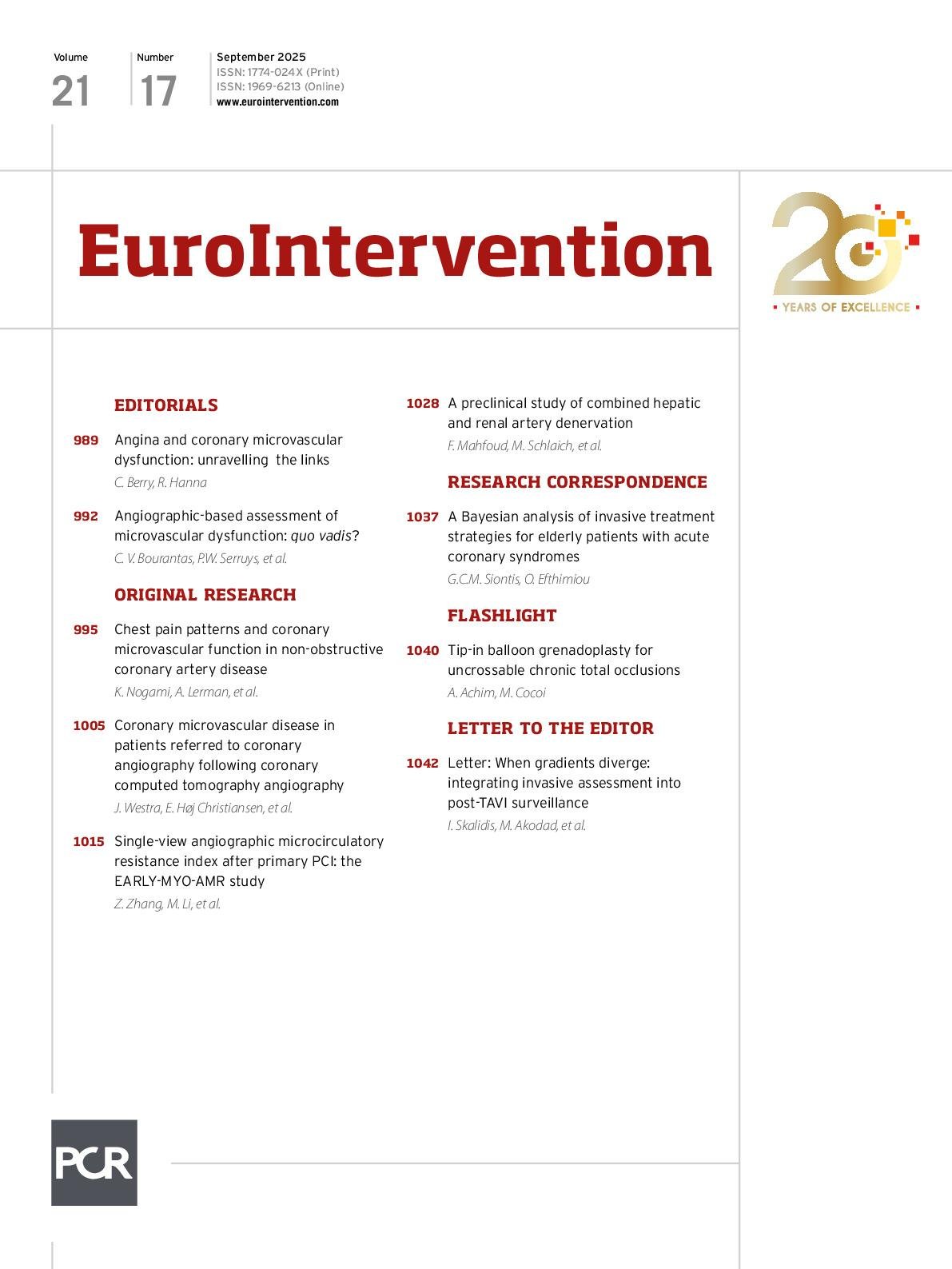The assessment of transvalvular gradients remains a cornerstone of evaluating valve performance after transcatheter aortic valve implantation (TAVI). However, the clinical interpretation of invasive versus echocardiographic measurements continues to pose challenges, particularly when discordance arises. In this context, the recent study by van den Dorpel et al offers valuable insights by addressing the prognostic significance of invasive versus echocardiography-derived aortic gradients after TAVI1. Their findings – that only invasively measured gradients independently predicted mortality at 30 days, 1 year, and 2 years – offer a compelling case for re-evaluating how postprocedural valve function is assessed in clinical practice.
This divergence between invasive and echocardiographic gradients raises an important question: are these modalities truly interchangeable in routine post-TAVI evaluation? If invasive gradients offer stronger prognostic value, should they play a larger role in guiding follow-up or therapeutic decision-making, particularly when echocardiographic findings are borderline or discordant?
The consistent overestimation of gradients by echocardiography – especially in balloon-expandable valves, smaller annuli, or patients with a high ejection fraction – also warrants closer examination. Could these discrepancies be attributed solely to technical factors, such...
Sign up for free!
Join us for free and access thousands of articles from EuroIntervention, as well as presentations, videos, cases from PCRonline.com

